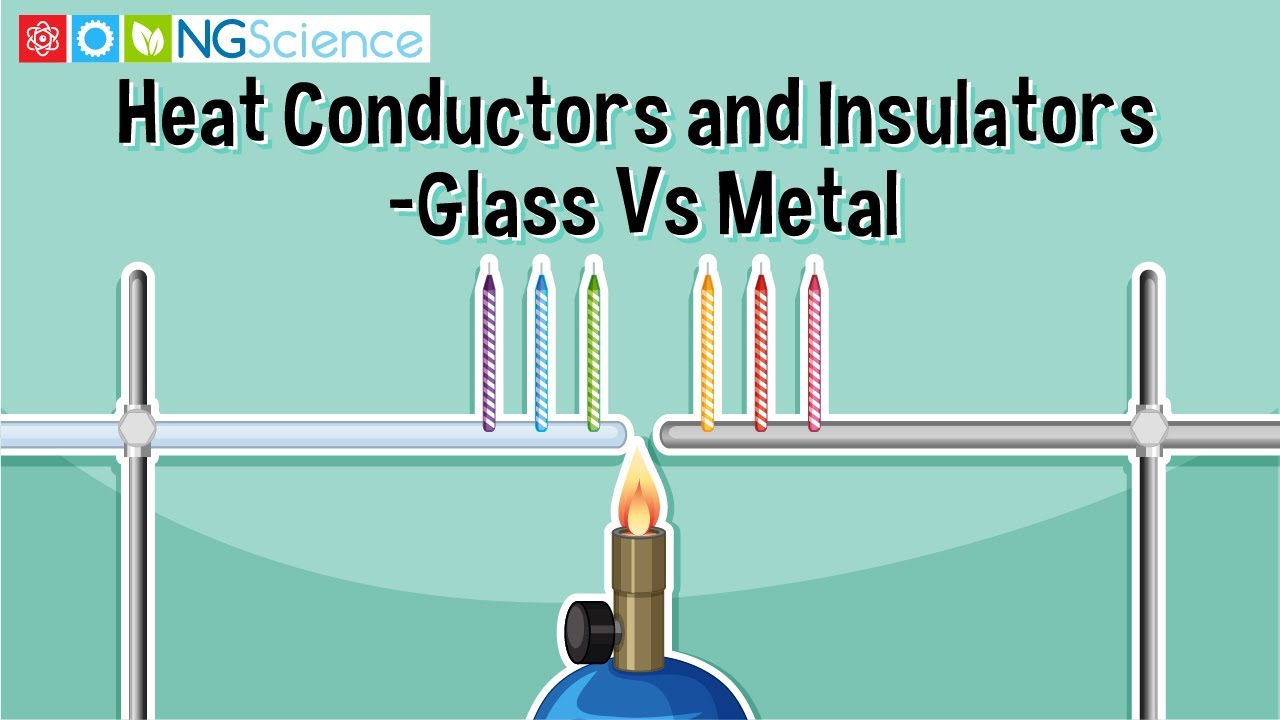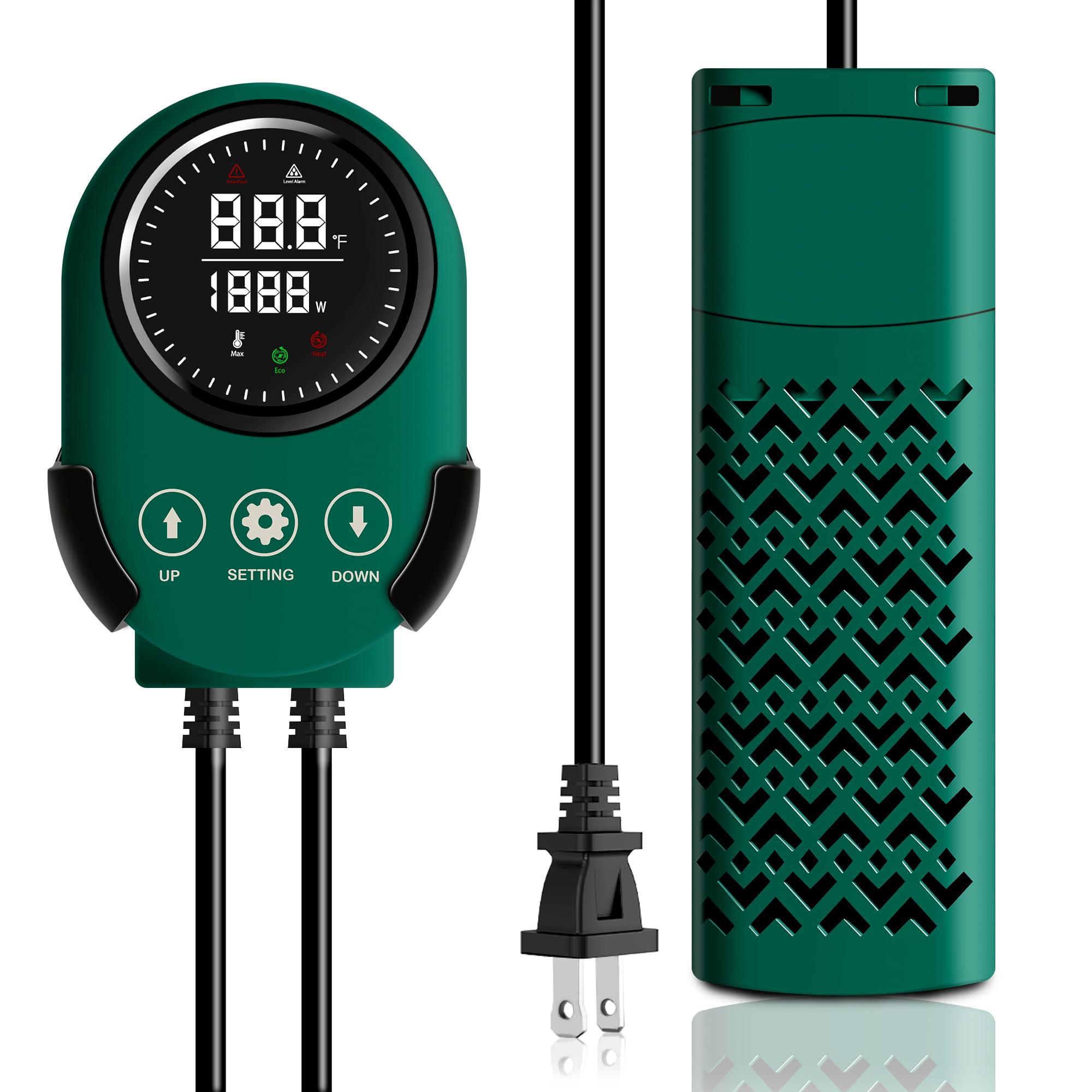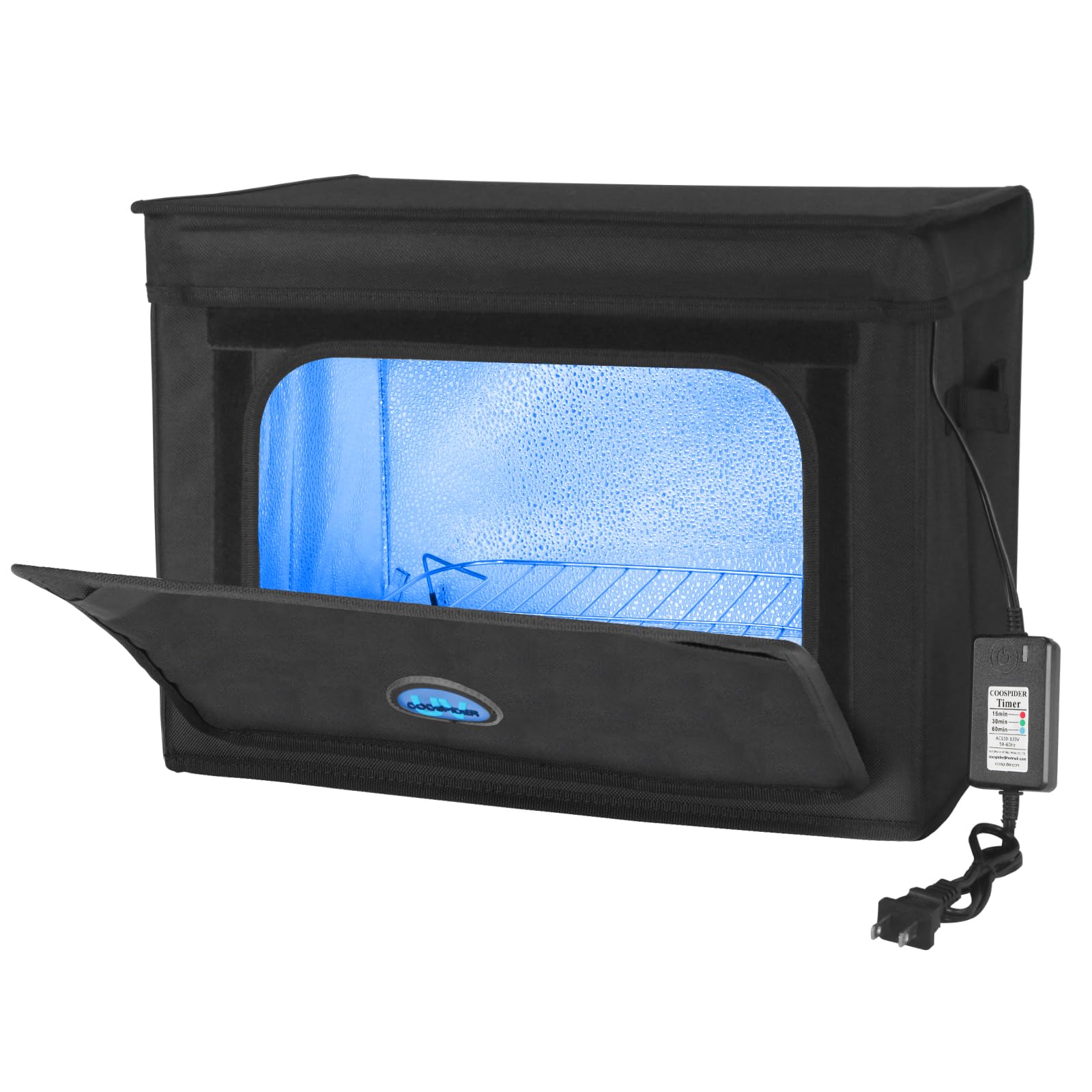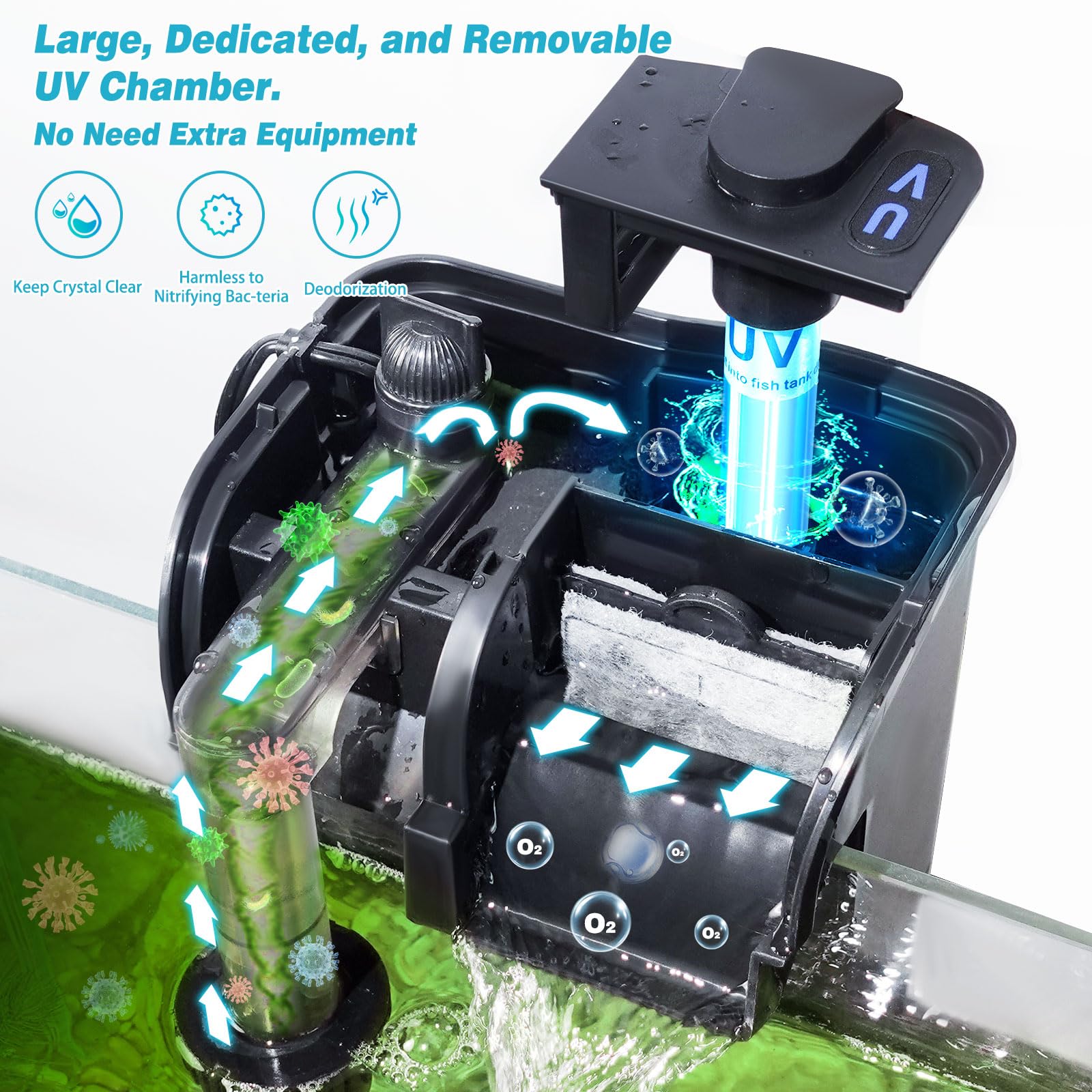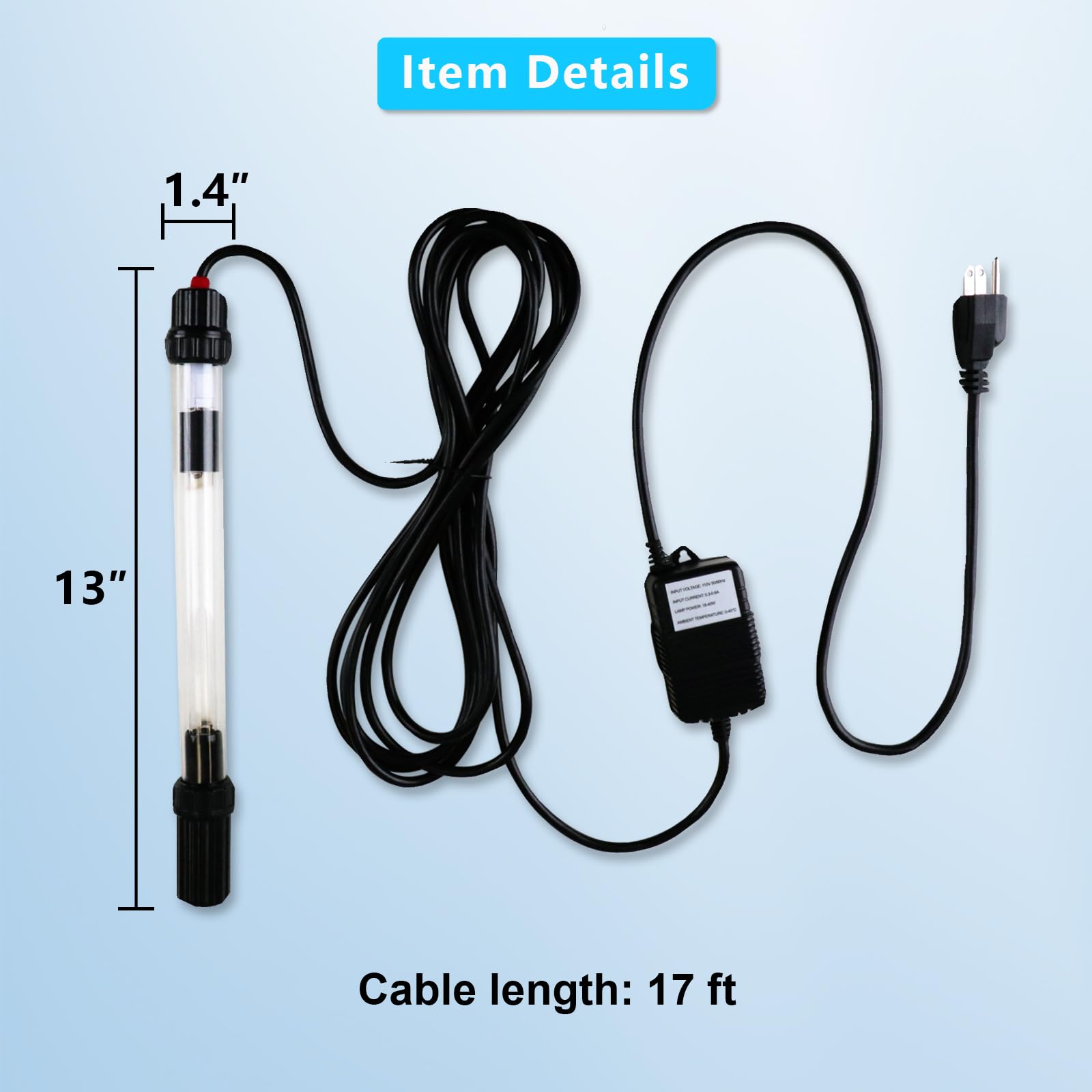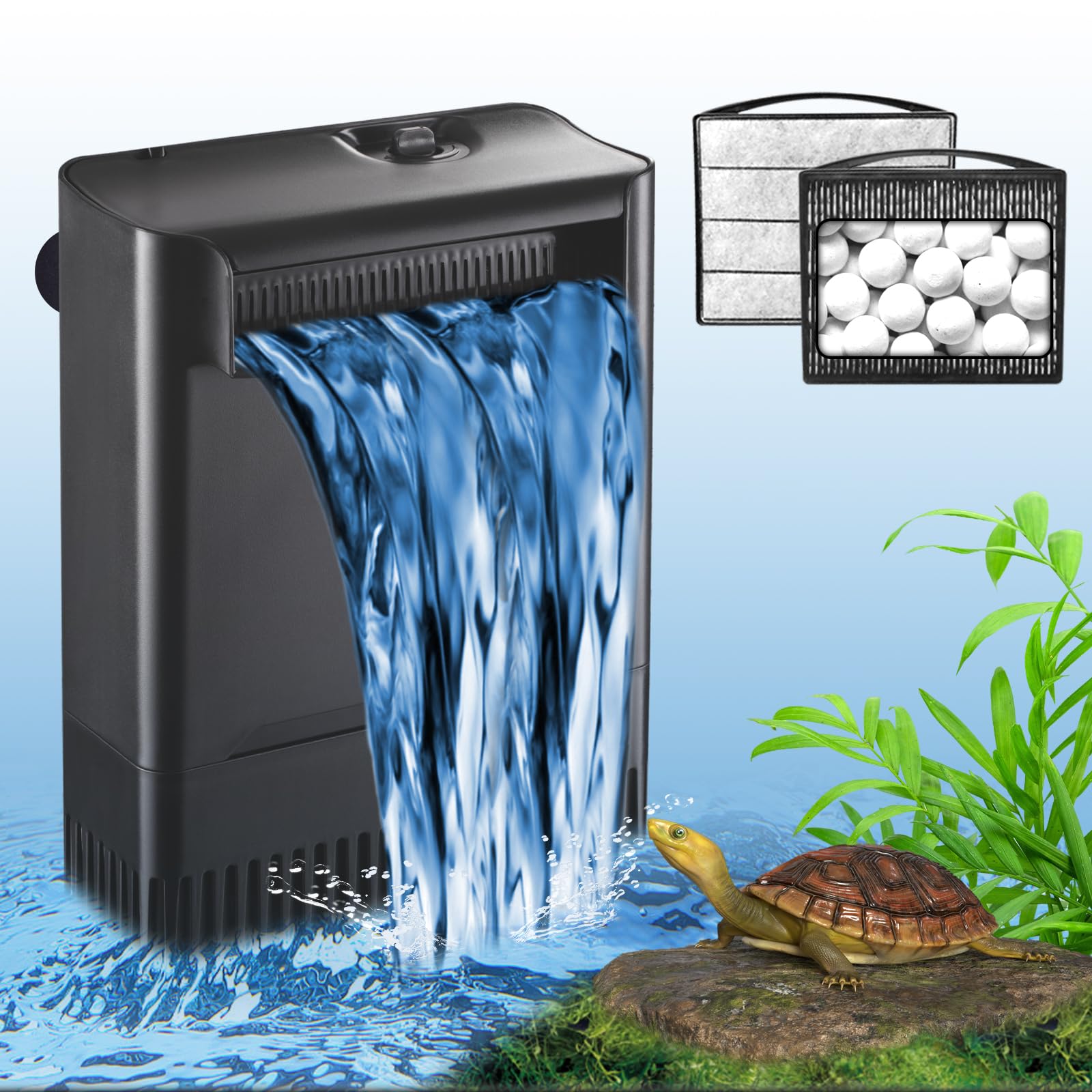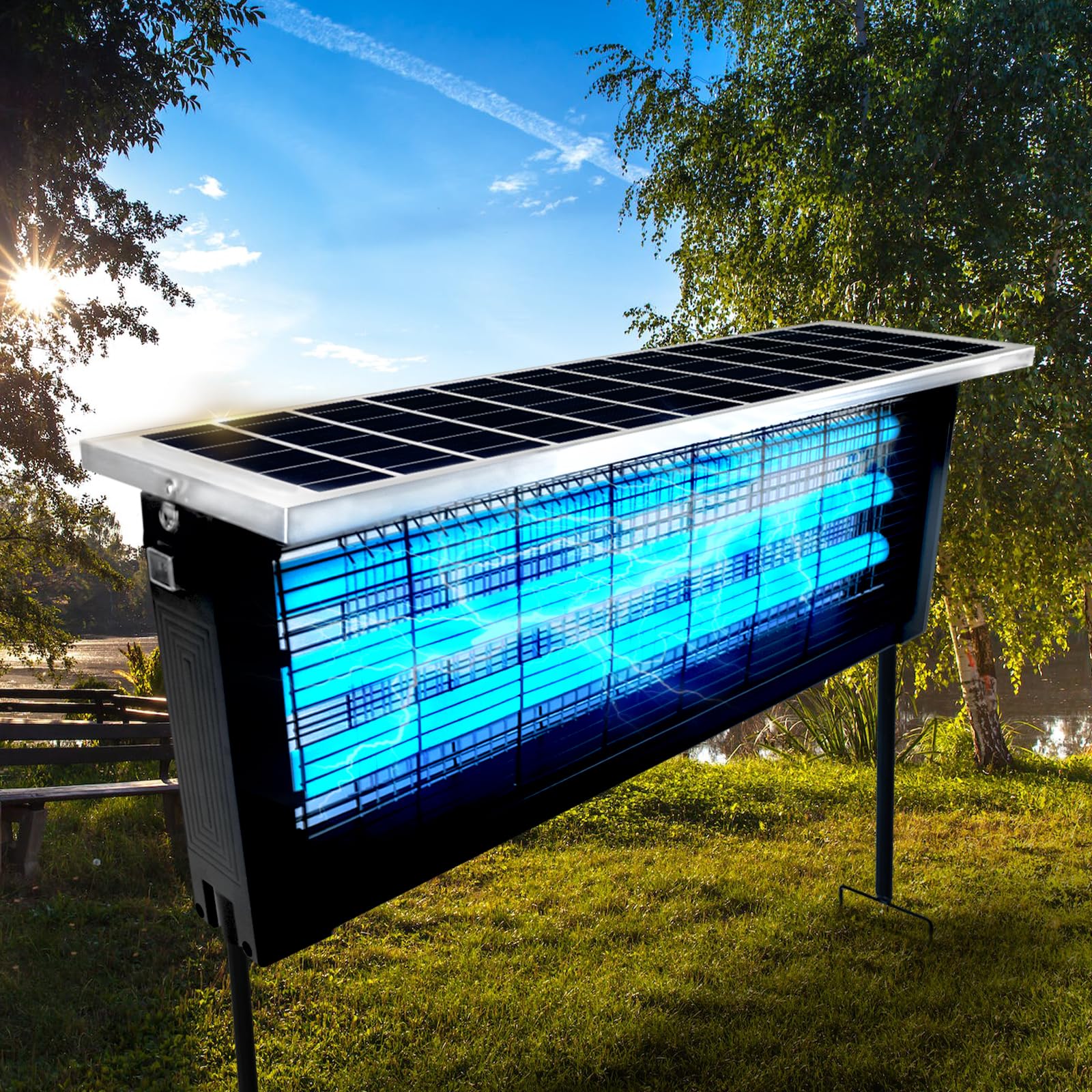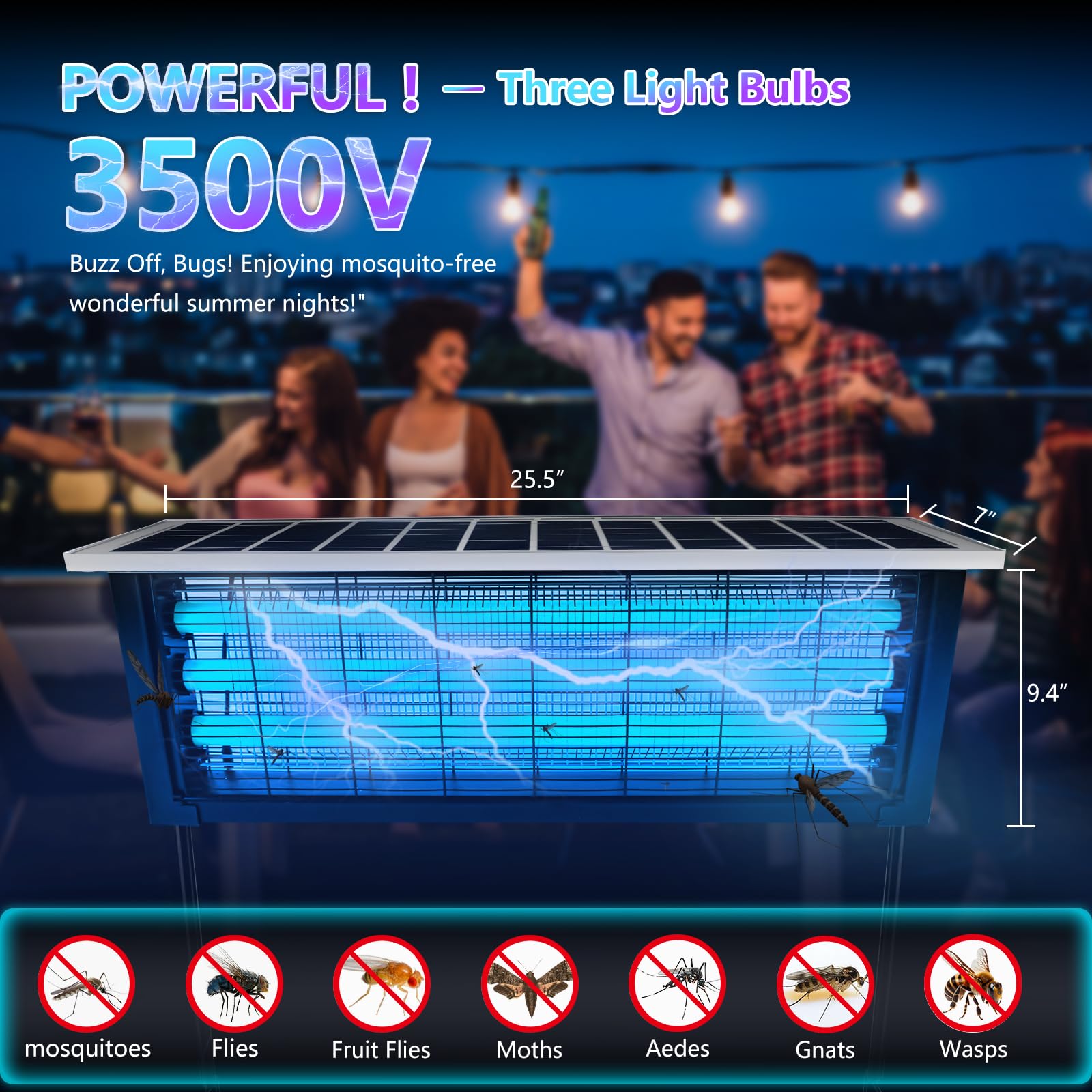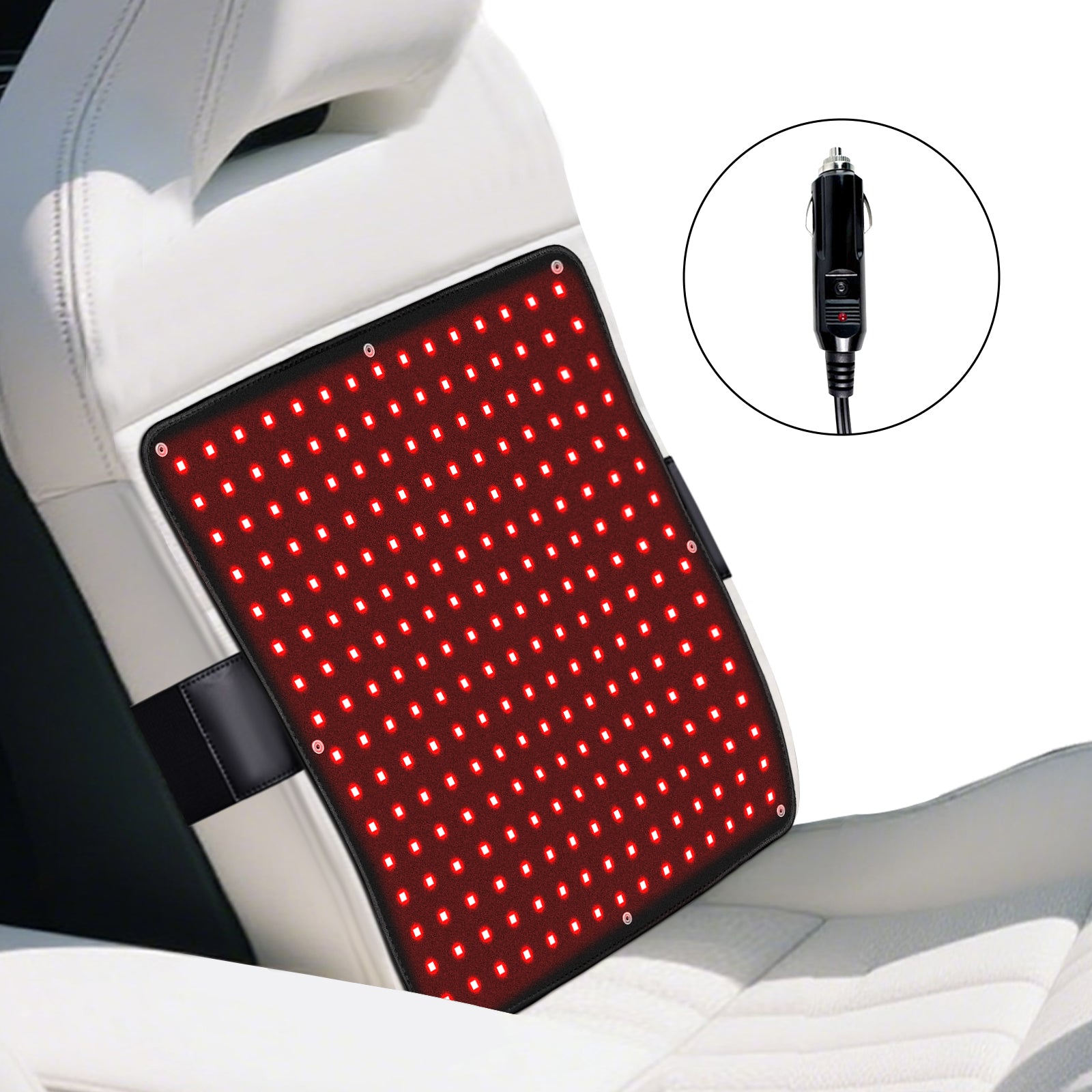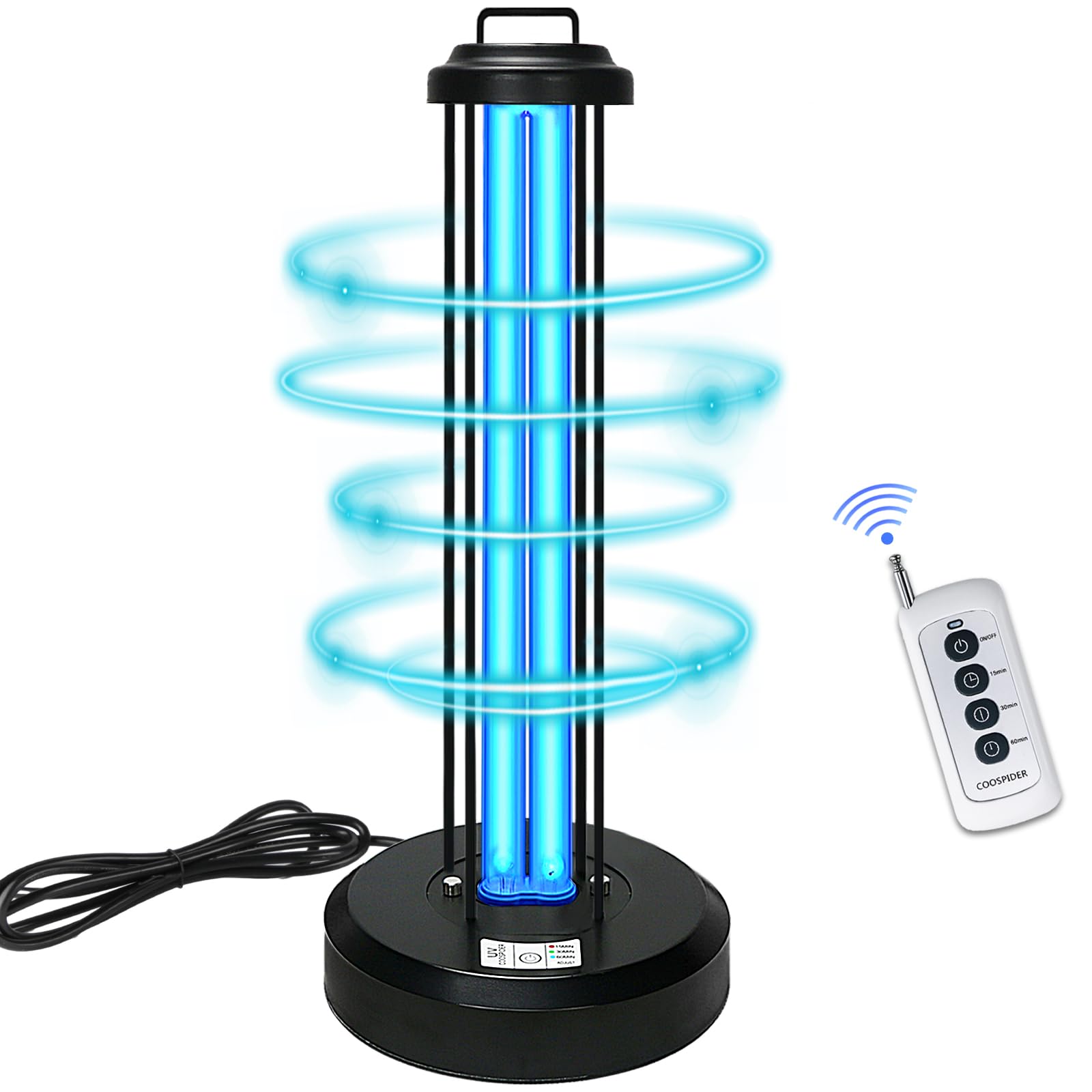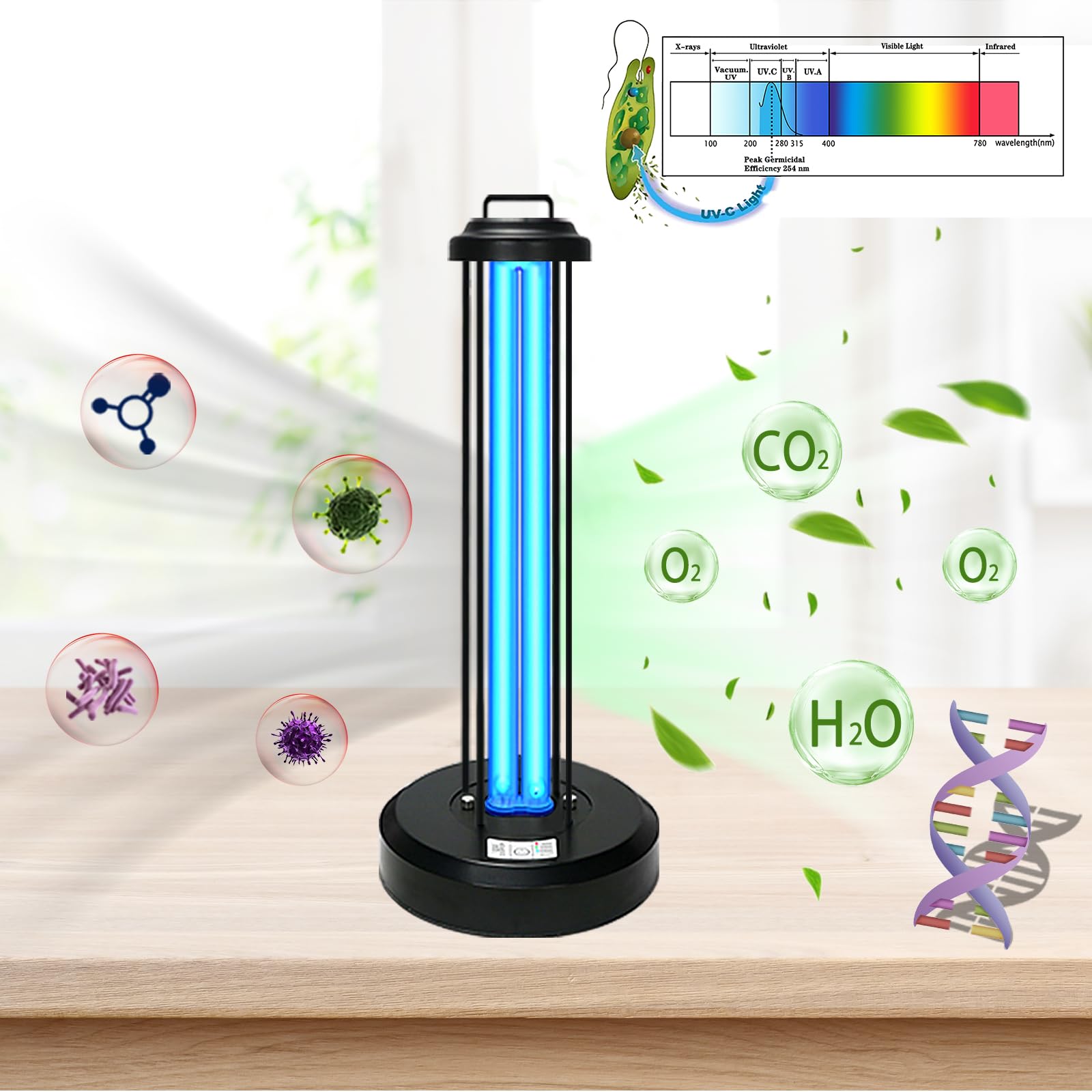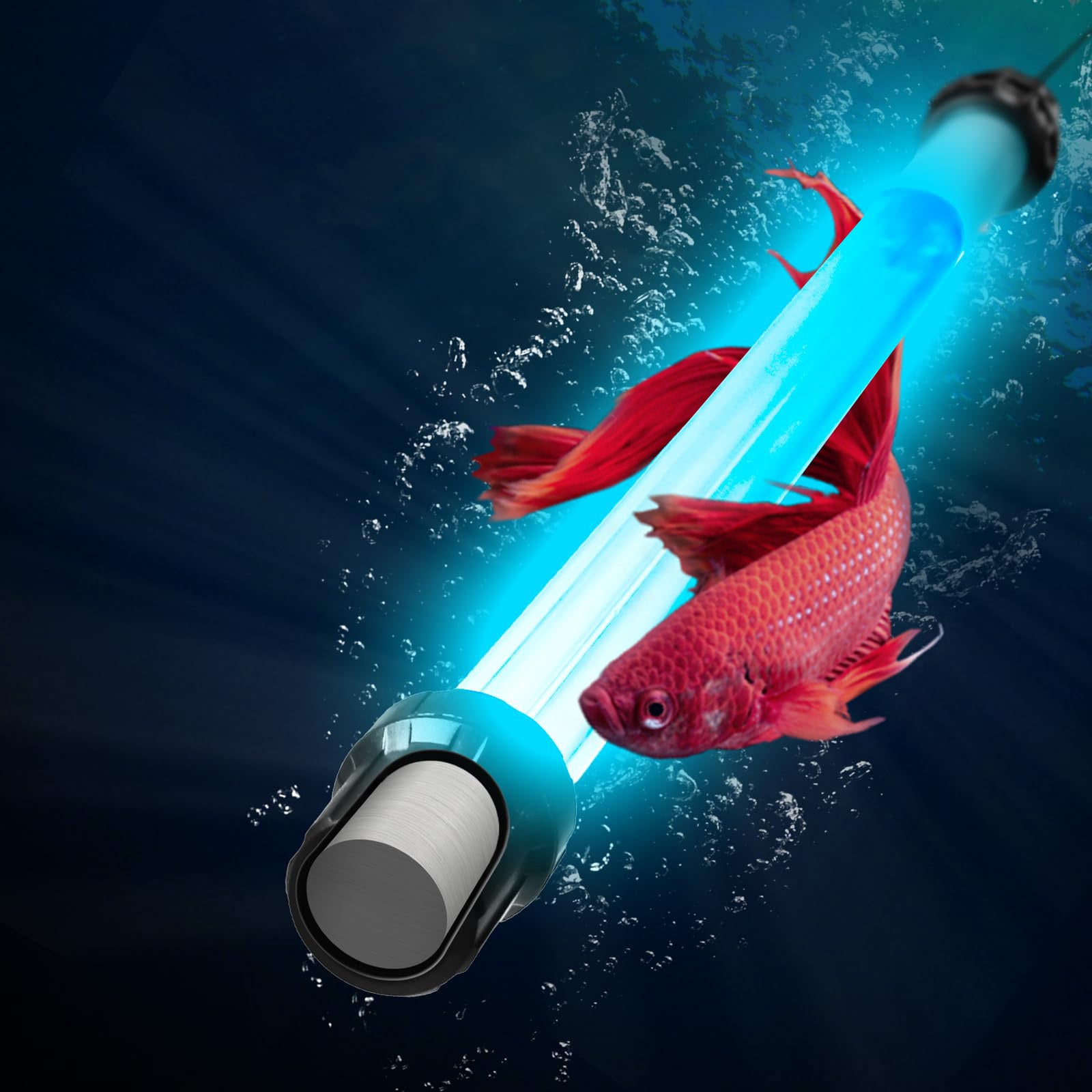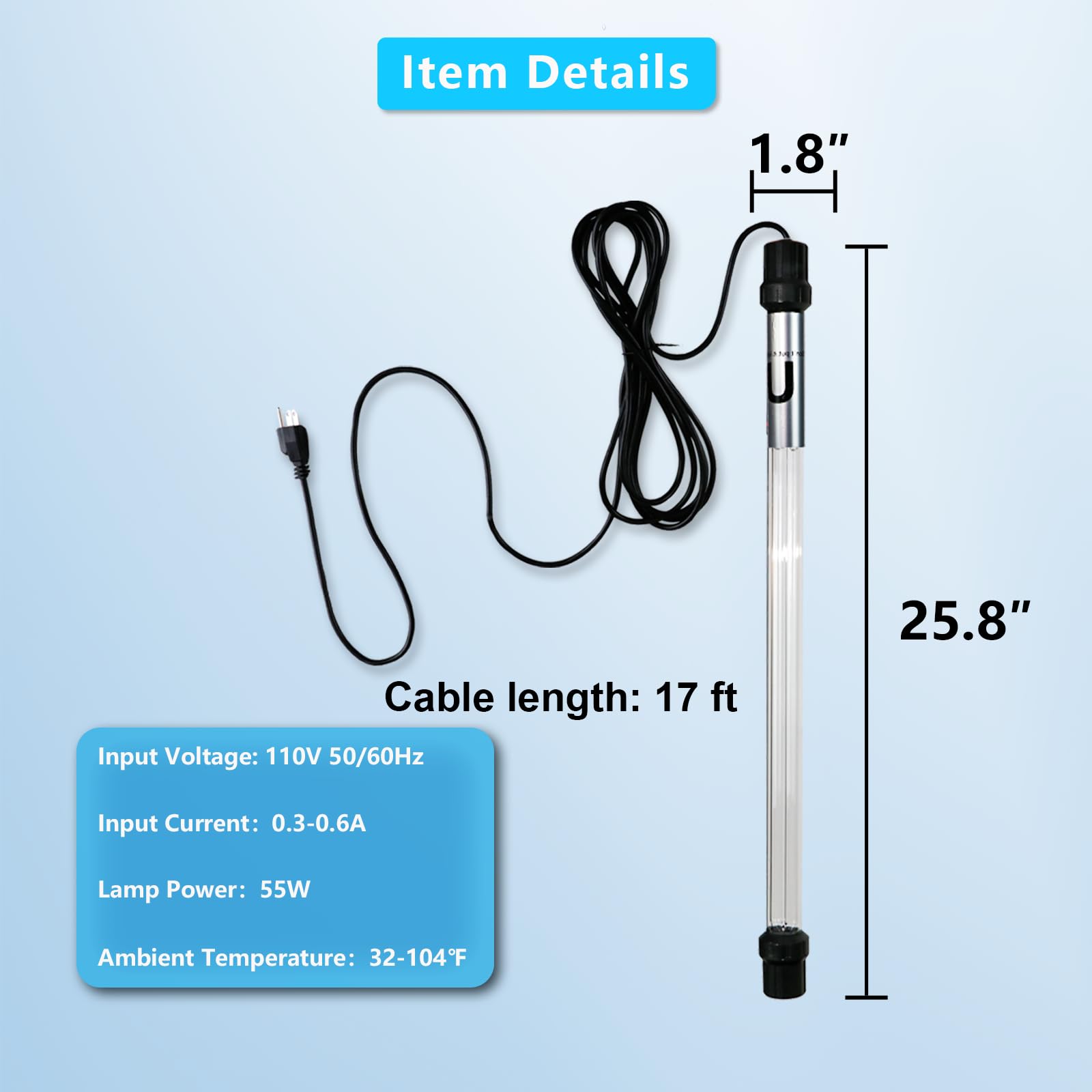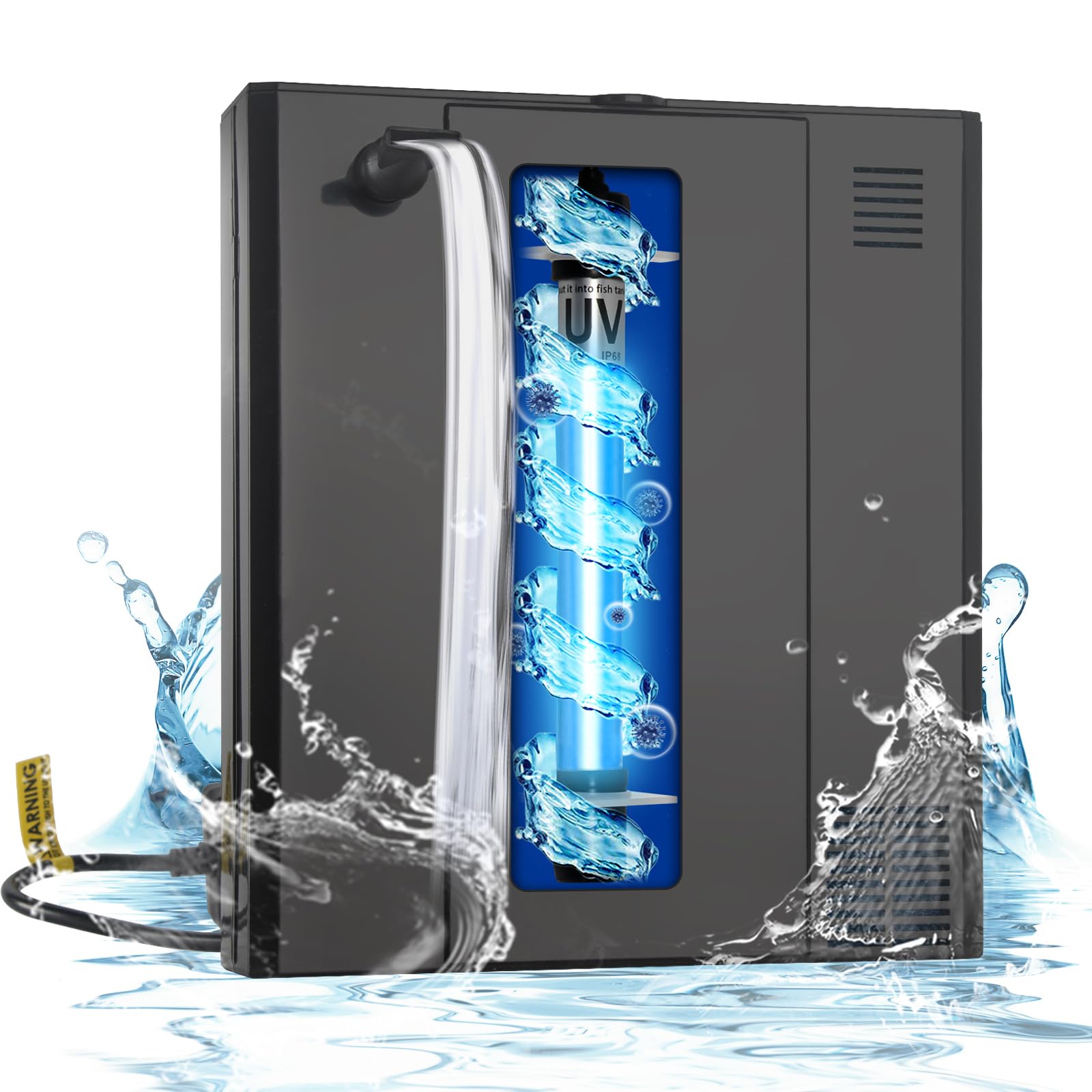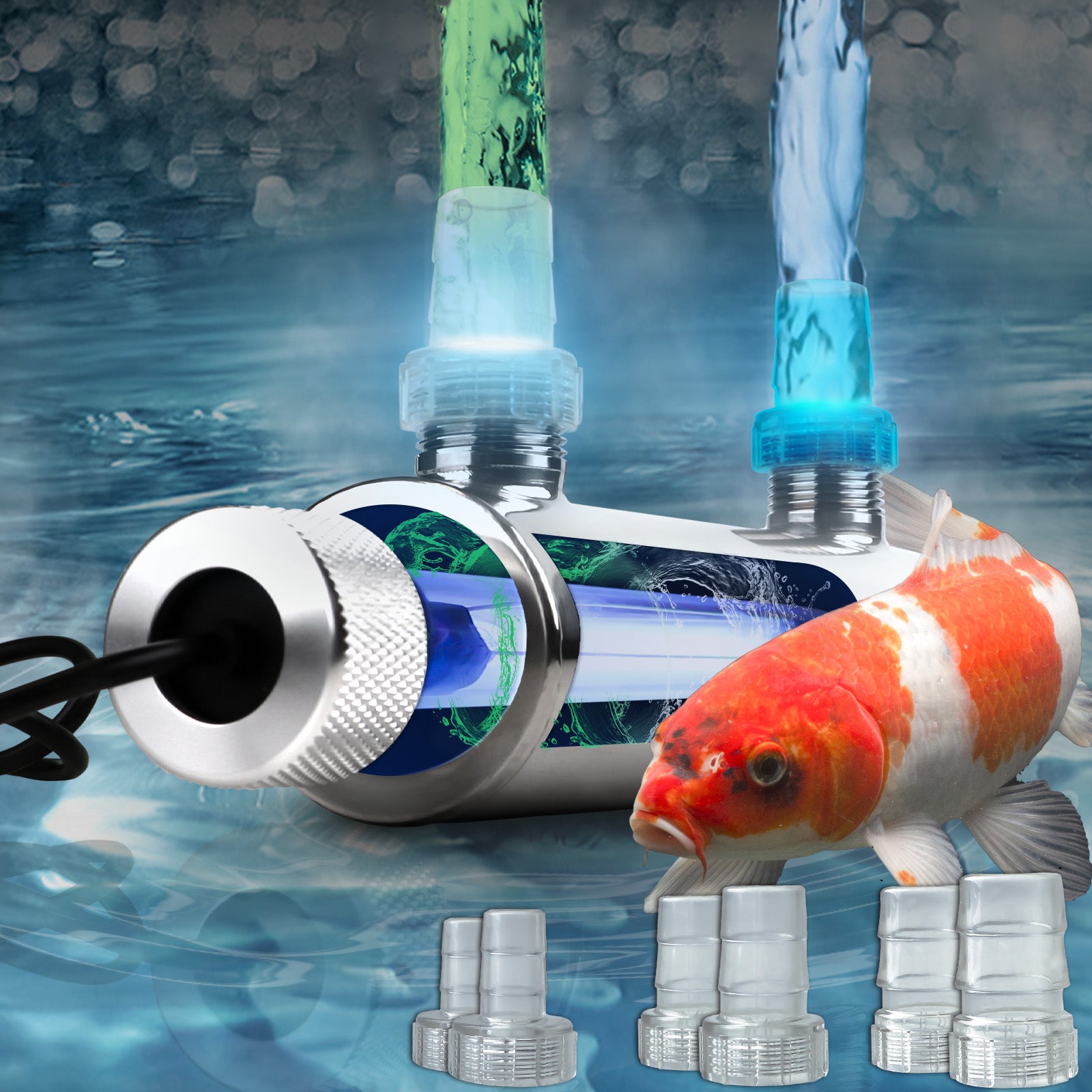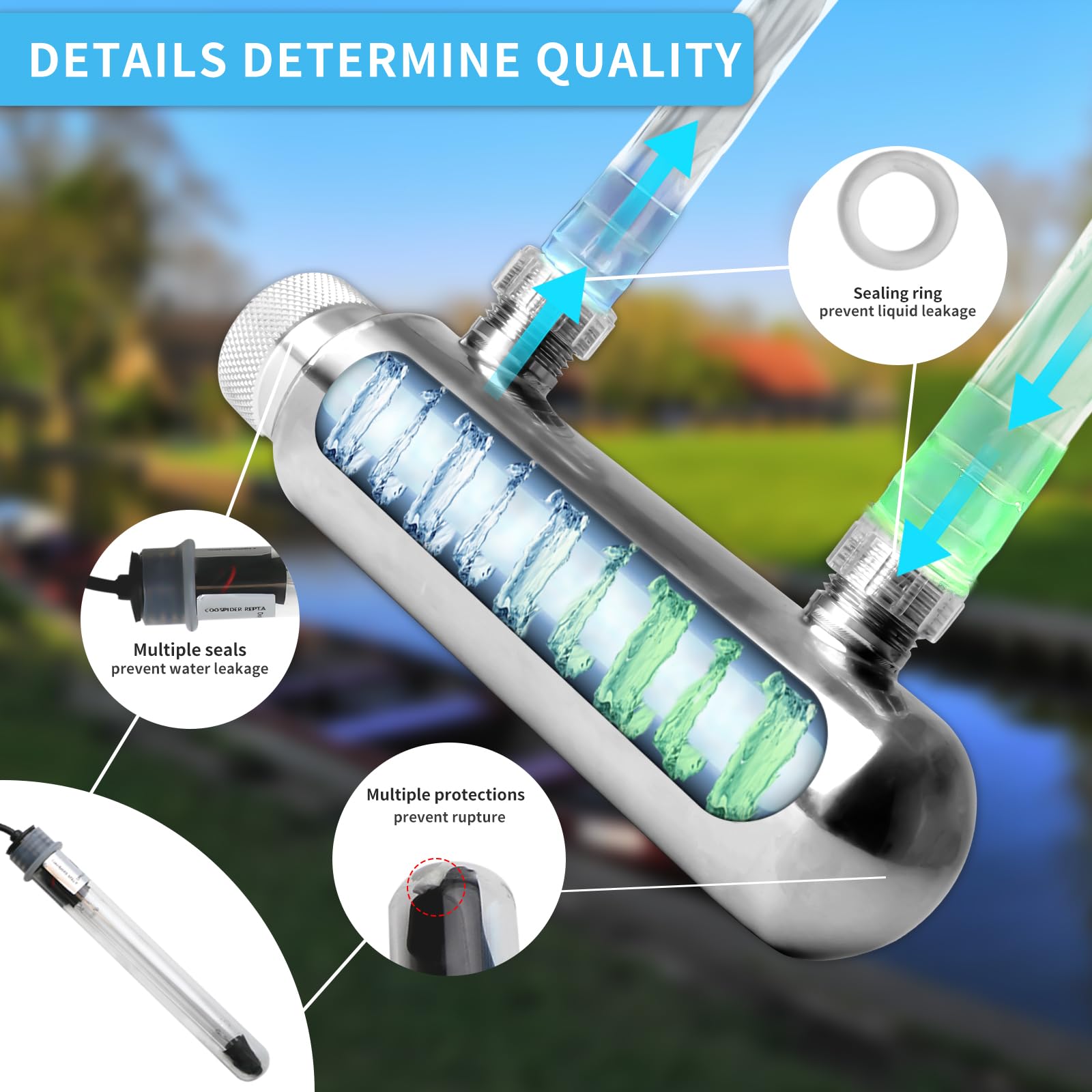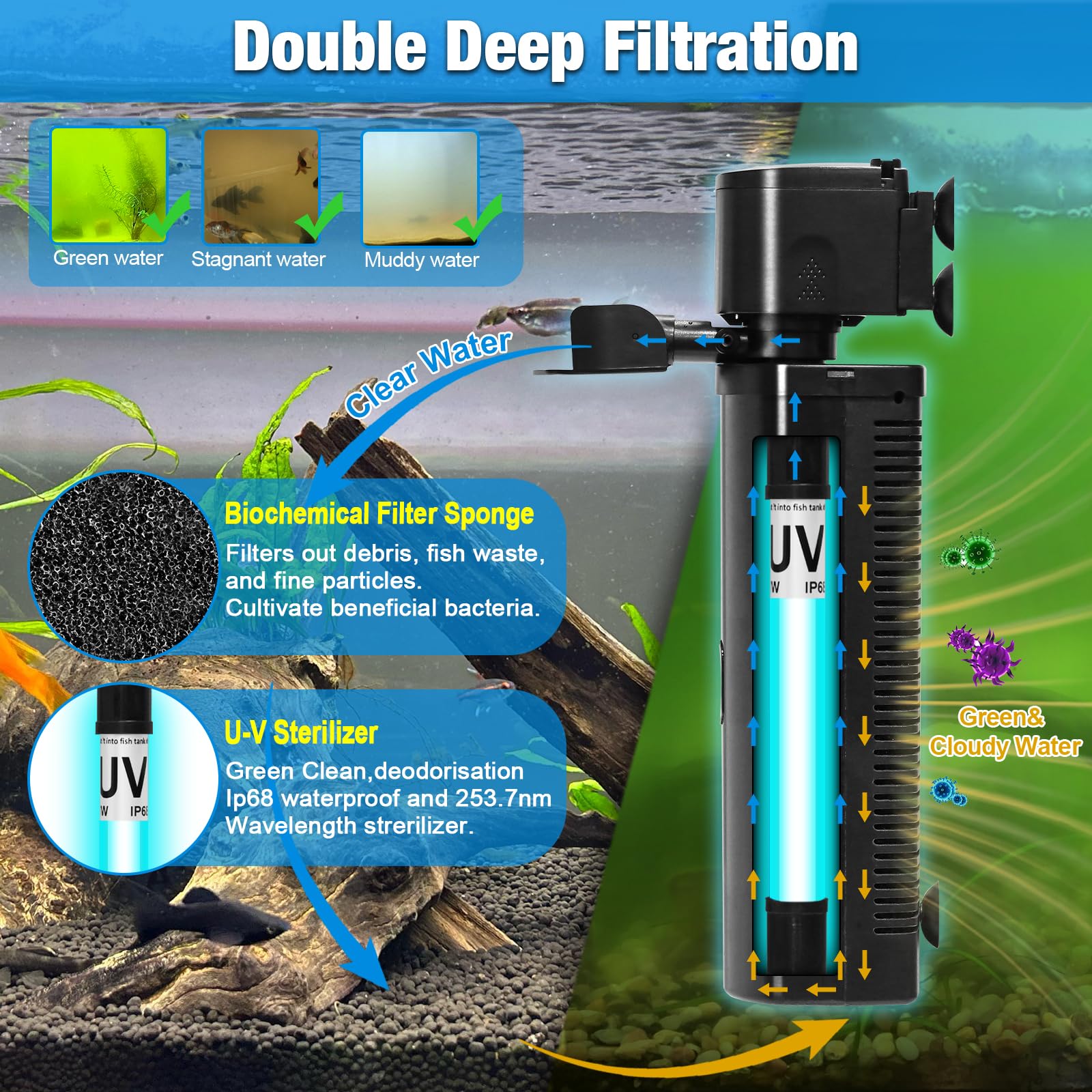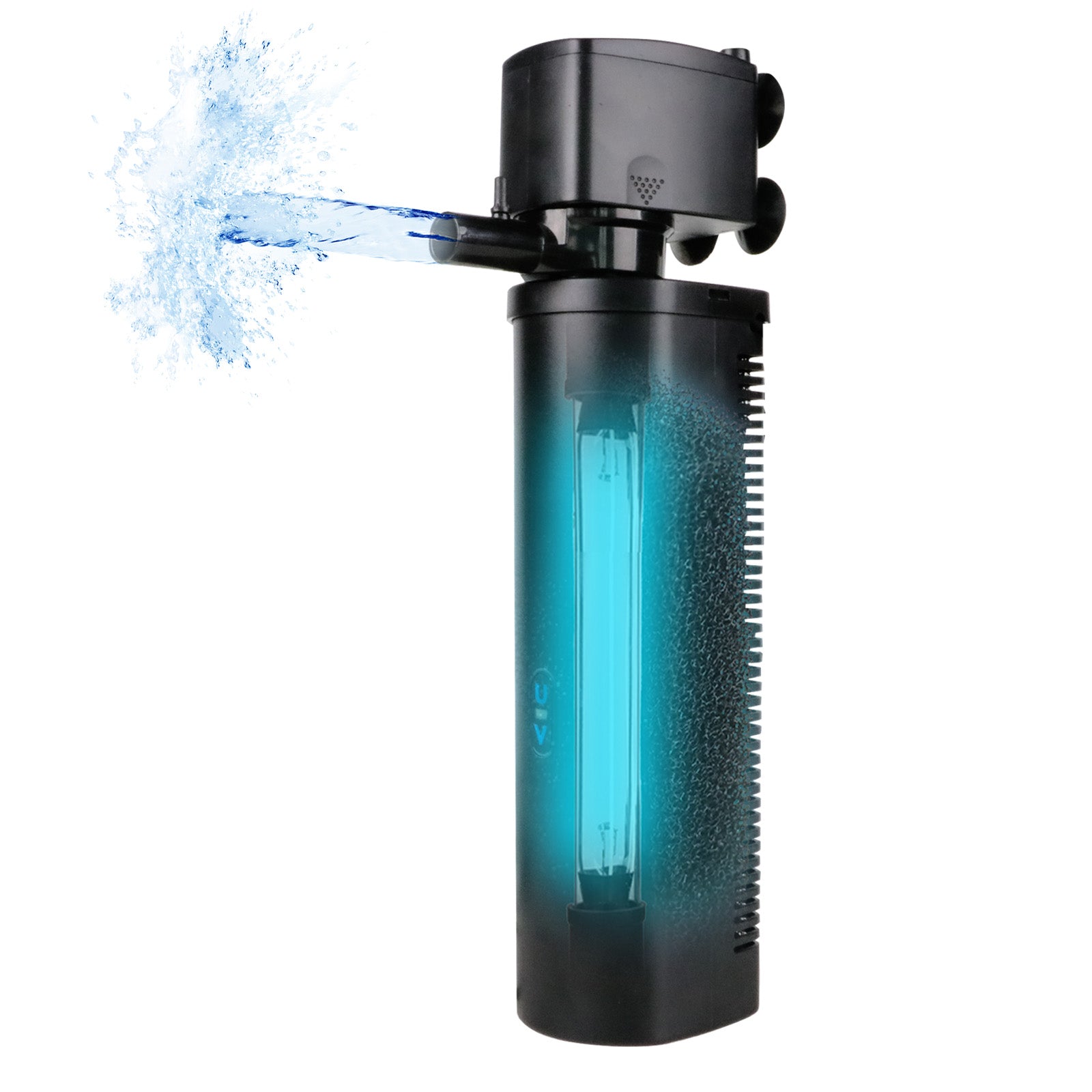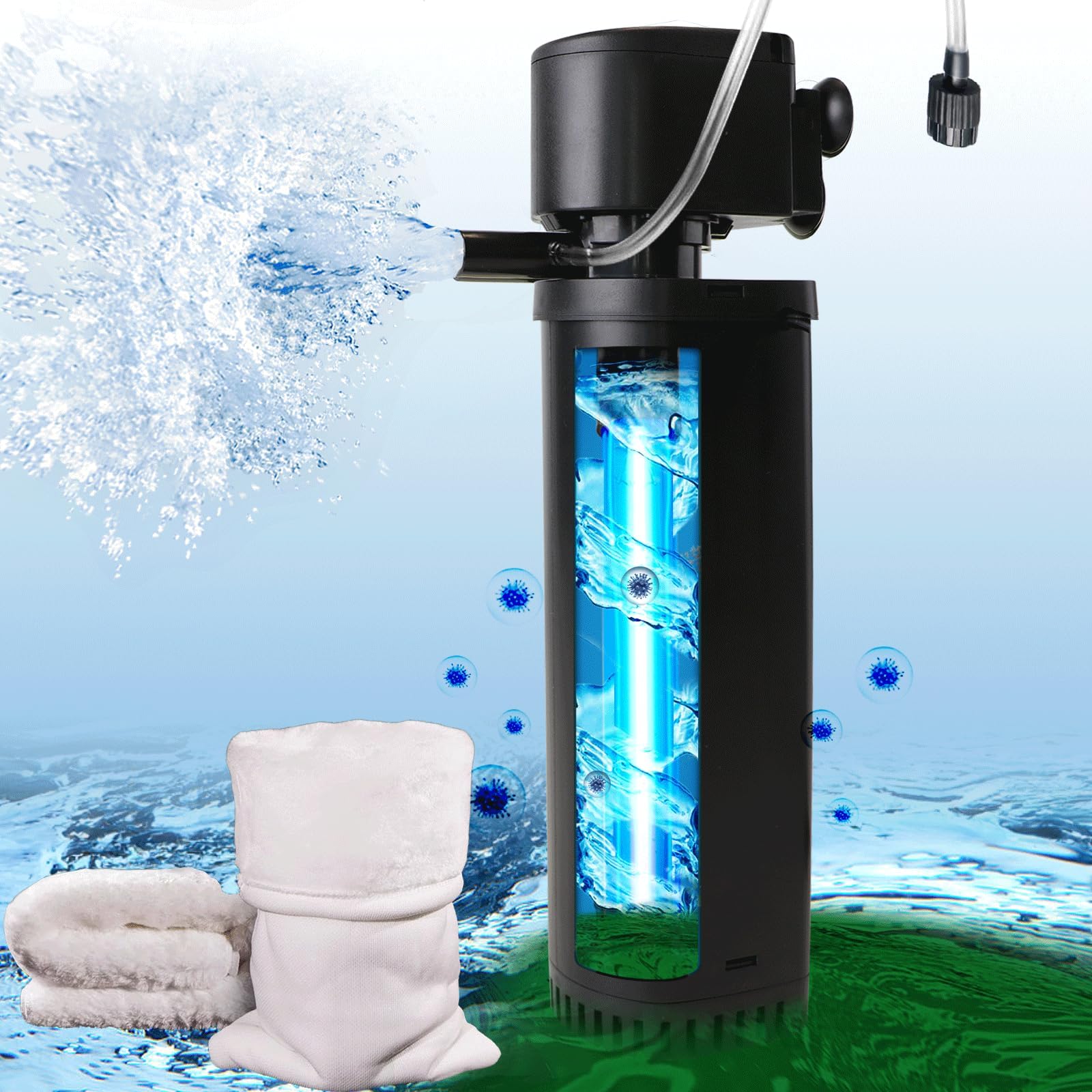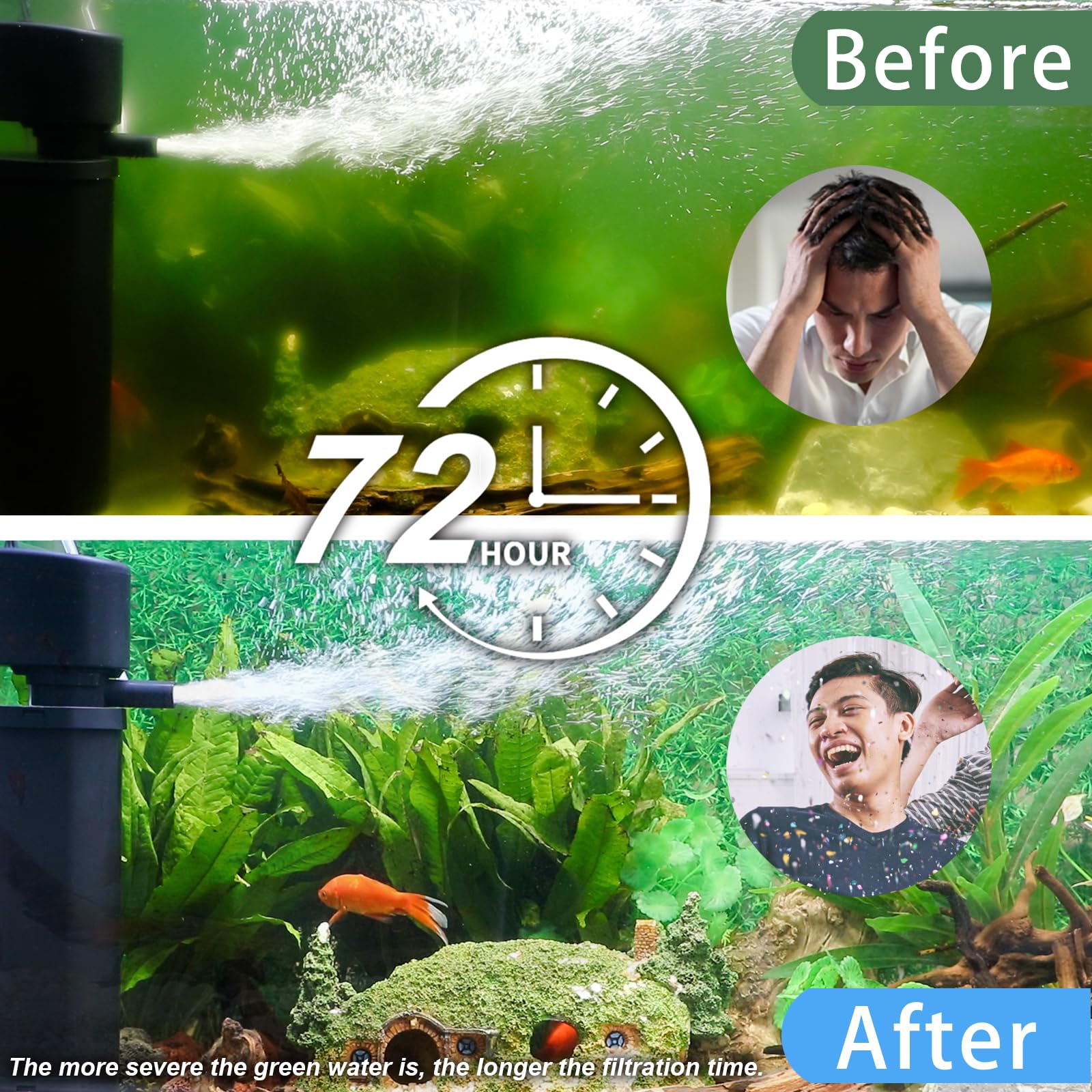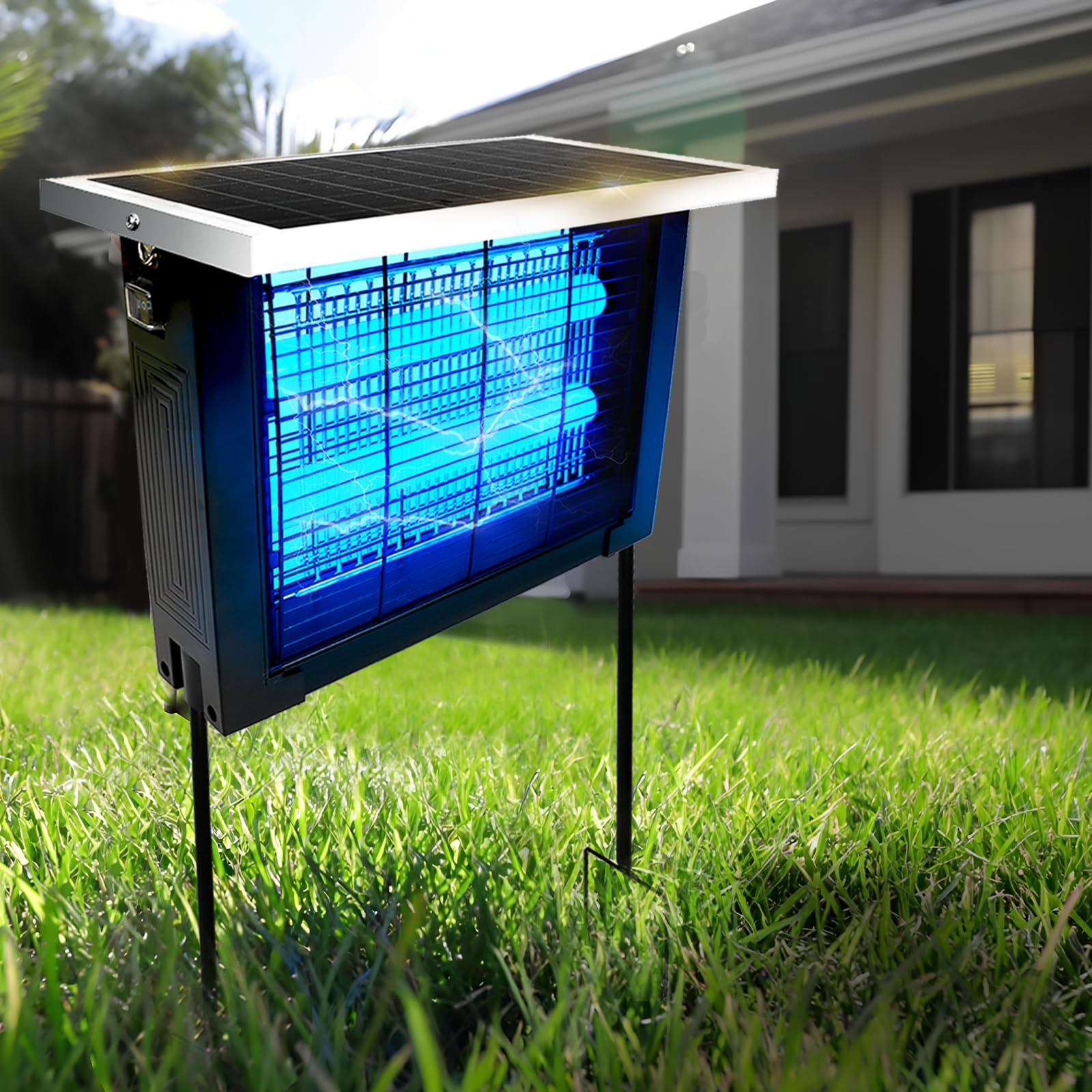For many aquarium hobbyists, the heater rod (also called an aquarium heater or immersion heater) is one of the most underestimated components of a tank setup. A good filter keeps the water clean, lights keep the plants alive, but the heater—quietly tucked away in the corner—keeps your entire aquatic environment safe from deadly temperature swings. Whether you’re keeping tropical fish, shrimp, amphibians, or sensitive species like discus or koi fry, water temperature stability directly determines survival.
But once you decide to buy a heater rod, the next big question hits:
Should you choose a glass heater or a stainless-steel heater?
Which material is more durable, safer, and more suitable for your setup?
This is one of the most common questions asked by new fishkeepers and even advanced aquarists who are upgrading to larger tanks. Both materials have their strengths, both have weaknesses, and the “best” choice depends heavily on your tank environment, your livestock, and your maintenance habits.
In this comprehensive guide, we’ll break down everything you need to know:
-
What makes glass heaters popular
-
What stainless-steel heaters do better
-
Durability comparisons
-
Safety and performance differences
-
Heat accuracy and efficiency
-
Suitability for different tank types
-
Common failure points
-
Expert recommendations
-
And a final verdict to help you choose confidently
Let’s dive deep into the glass vs. stainless-steel heater rod debate and settle it once and for all.
1. Why Heater Rod Material Matters More Than You Think
At first glance, a heater rod looks simple: a tube with a heating element inside. But the material enclosing that element determines:
-
How long the heater lasts
-
How resistant it is to shocks, bumps, and sudden temperature changes
-
Whether your fish are safe from burns or electric leaks
-
How evenly heat distributes across the tank
-
How well the heater resists corrosion or mineral buildup
In low-stakes settings, such as a small desktop betta tank, a basic glass heater might work fine. But in high-value environments—reef tanks, breeding tanks, or large freshwater systems—the material choice can significantly impact long-term stability.
Think of it like choosing between a plastic tool and a metal tool. Both work, but only one is made to endure heavy use.
2. Glass Heater Rods: Features, Strengths, and Weak Points
Glass heaters have been on the market for decades, making them the “industry standard.” Most affordable heaters use heat-resistant borosilicate glass—the same type used in lab beakers and oven-safe cookware.
Advantages of Glass Heaters
1. Affordable and widely available
Glass heaters dominate the budget and mid-range aquarium heater market. If you walk into any pet store, 70–80% of heaters on the shelves are glass.
2. Transparent body makes internal problems easy to see
You can visually inspect:
-
Presence of condensation
-
Internal cracks
-
Burn marks
-
Loose components
This is surprisingly helpful when diagnosing issues early.
3. High heat tolerance
Borosilicate glass handles high temperatures without deforming, which is why manufacturers trust it.
4. Doesn’t interfere with internal electronics
Because glass is a natural insulator, it keeps internal circuits electrically isolated.
Weaknesses of Glass Heaters
Despite improvements, glass heaters still come with well-known drawbacks.
1. Breakable—both underwater and during cleaning
Glass is glass. Even borosilicate can crack under:
-
Hard knocks from rocks
-
Curious turtles or large cichlids
-
Sudden cold-to-hot temperature change
-
Accidental drops during maintenance
-
Suction cups giving out and the heater falling
A shattered heater is extremely dangerous:
broken glass + exposed heating element = electrocution and cooked fish risk.
2. Susceptible to thermal shock
If a heater is partially exposed (e.g., during water changes) and suddenly recooled by air, the glass may fracture.
3. Heavier mineral buildup
Glass is slightly porous, which can attract:
-
Calcium scaling
-
Algae film
-
Salt creep in marine tanks
This does not necessarily break the heater, but it does reduce heating efficiency over time.
4. Slower heat conduction
Glass does not conduct heat as quickly as stainless steel.
This affects temperature accuracy, especially in larger tanks.
3. Stainless-Steel Heater Rods: Why They’re Becoming More Popular
Stainless-steel heaters are quickly gaining popularity, especially among serious aquarists and professional breeders.
These heaters use 304 or 316 marine-grade stainless steel, designed to resist corrosion even in saltwater tanks.
Advantages of Stainless-Steel Heaters
1. Extremely durable and nearly unbreakable
Unlike glass, stainless steel won’t crack, shatter, or chip.
This makes it ideal for tanks with:
-
Turtles
-
Large cichlids
-
Goldfish (notorious for bumping equipment)
-
Plecos or catfish that latch onto equipment
-
High-traffic commercial tanks
If you want “buy once, cry once,” stainless steel wins.
2. Much faster heat transfer
Metal conducts heat efficiently, leading to:
-
Faster tank warming
-
More stable temperature control
-
Higher heating accuracy
This is especially important in large tanks or tanks with heavy water circulation.
3. No thermal shock risk
Stainless steel handles sudden temperature shifts with ease.
4. Better suited for cold rooms or outdoor tanks
Because it heats more quickly and loses heat more slowly, stainless steel is better in environments prone to temperature drops.
Weaknesses of Stainless-Steel Heaters
They’re not perfect. Here are the tradeoffs.
1. You can’t see what’s happening inside
A major disadvantage. You can’t visually inspect internal failures.
2. Requires proper grounding
Low-quality stainless-steel heaters may cause stray voltage if not well insulated.
High-quality brands solve this with thicker insulation and safety cutoffs.
3. Slightly more expensive
Although prices are dropping, stainless-steel heaters still cost more than entry-level glass heaters.
4. Can get hotter to the touch
Sensitive fish, fry, or inverts may risk burns if they contact the heater directly.
A heater guard solves this issue.
4. Durability Comparison: Which Material Survives Longer?
Let’s compare lifespan and durability in real-world environments.
Impact Resistance
-
Glass: Fragile—breaks under impact
-
Stainless Steel: Almost impossible to break
Winner: Stainless steel
Thermal Shock
-
Glass: High risk
-
Stainless Steel: No risk
Winner: Stainless steel
Corrosion Resistance
-
Glass: Excellent
-
Stainless Steel: Great if 316-grade; can degrade if low quality
Winner: Tie (depends on stainless-steel quality)
Expected Lifespan
-
Glass: 1–3 years on average
-
Stainless Steel: 5–10 years for high-quality brands
Winner: Stainless steel
Survivability in Harsh Tanks
-
Turtle tanks
-
Tanks with rocks
-
Aggressive fish
-
Large tanks with strong flow
Stainless steel performs dramatically better in all these conditions.
5. Heating Performance: Which Material Controls Temperature Better?
Heat Transfer Speed
Metal > Glass
Stainless steel warms water faster.
Temperature Stability
Because stainless steel responds more quickly to thermostat adjustments, temperature swings are smaller.
Accuracy
Modern stainless-steel heaters with digital controllers outperform nearly all glass heaters.
Energy Efficiency
Stainless steel is slightly more efficient due to lower heat loss.
Winner: Stainless steel
6. Safety Comparison: Which Material Is Safer for Fish?
Glass Safety
Pros:
-
Doesn’t get too hot on the outside
Cons: -
Can shatter
-
Exposed heating element risk
-
Higher chance of leak or malfunction
Stainless-Steel Safety
Pros:
-
Shatterproof
-
Better insulation
-
Often paired with external thermostats
Cons: -
Can burn fish if accidentally touched (use a guard)
Winner: Stainless steel, when paired with a heater guard
7. Tank Type Recommendations: Which Heater Works Best?
Here’s a quick guide based on your setup.
Best for Small Tanks (Under 20 Gallons)
-
Glass heaters work fine
-
Low impact environment
-
Budget-friendly
Best for Large Tanks (50–300 Gallons)
-
Stainless steel strongly recommended
-
Faster heat distribution
-
Higher durability
Best for Breeding Tanks
-
Stainless steel (more stable temperatures)
Best for Turtle Tanks
Absolutely stainless steel, with a guard.
Best for Aggressive Fish (Cichlids, Oscars, Flowerhorn)
Stainless steel—glass will eventually break.
Best for Saltwater Tanks
Tie:
-
Glass: corrosion-proof
-
Stainless steel: check for 316 marine grade
Best for Planted Tanks
Both work, but stainless steel offers better long-term stability.
8. Common Failure Points and How They Differ
Glass Heater Failures
-
Cracks
-
Water intrusion
-
Thermostat failure
-
Condensation inside the tube
-
Explosive shattering
-
Weak suction cups causing falls
Stainless-Steel Heater Failures
-
Controller malfunctions
-
Seal degradation
-
Stray voltage (rare with quality brands)
Overall failure rate is lower for stainless steel.
9. Price Comparison: Is Stainless Steel Worth the Extra Cost?
Glass Heater Cost
$10–$25
Cheap upfront, but shorter lifespan means more replacements.
Stainless-Steel Heater Cost
$20–$60
Higher upfront cost but lasts 2–4× longer.
Long-Term Cost Efficiency
Stainless steel wins easily.
10. Final Verdict: Which Heater Material Should You Choose?
If you want a simple answer:
⭐ For durability, safety, and accuracy, stainless steel heaters are the better choice for most situations.
They outperform glass heaters in:
-
Lifespan
-
Impact resistance
-
Heating speed
-
Stability
-
Safety
When should you choose glass?
-
Small budget
-
Small community tanks
-
Low-risk environments
-
Beginner setups
When should you choose stainless steel?
-
Large tanks
-
Expensive livestock
-
Turtle or cichlid tanks
-
Outdoor or cold rooms
-
Long-term reliability
Conclusion
Choosing between a glass heater and a stainless-steel heater isn’t just about price—it’s about long-term stability, pet safety, and avoiding preventable disasters. Glass heaters are affordable and widely used, but they’re fragile and prone to failure. Stainless-steel heaters, on the other hand, offer superior durability, faster heating, and better life expectancy.

